Jimbour Station : History in Pictures
By Simon Miller, Library Technician, State Library of Queensland | 17 April 2018
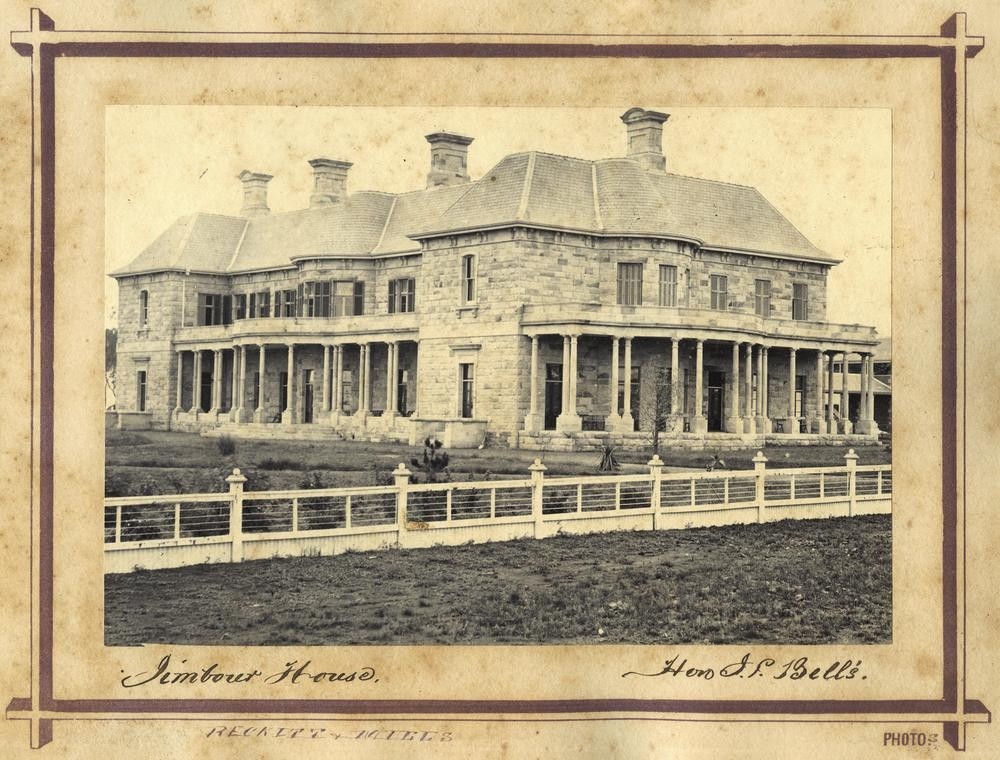
Jimbour House, ca. 1877, John Oxley Library, State Library of Queensland Image number: APE-014-01-0015
Jimbour is one of the oldest stations on the Darling Downs and the heritage listed Jimbour Homestead is perhaps the grandest country home ever constructed in Queensland. The name Jimbour, originally spelled Gimba or Jimba is from an unidentified aboriginal language apparently referring to good grass or sheep. The property was found and claimed by Henry Dennis on behalf of his employer Richard Todd Scougall and by 1842 they had established a flock of 11,000 sheep and some 700 cattle. Scougall's ownership of Jimbour was short lived as he ran into financial difficulties and in 1843 the station was sold to Thomas Bell with sheep, cattle and all improvements for £3,200.
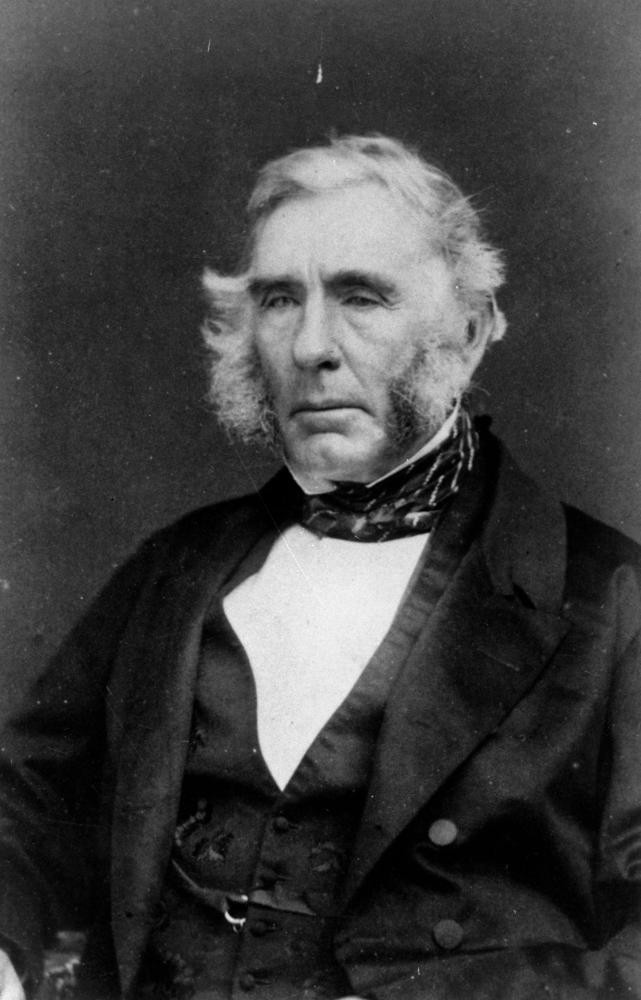
Thomas Bell, John Oxley Library, State Library of Queensland Neg: 73440
Thomas Bell came to Queensland from Northern Ireland in charge of convicts in around 1829 bringing his family. Thomas initially left the management of Jimbour to Henry Dennis but when Dennis was drowned in a shipwreck in 1847, he took up the management himself. The Bell family ran the property until 1892 and were responsible for the construction of the homestead and other important buildings on the property. The first house on Jimbour was a primitive hut built by Henry Dennis but this was replaced by a wooden slab house built by Richard Scougall which burnt down in 1867. The Bells built a new two story house from blue stone and timber which, minus its top story, is still in use at Jimbour.
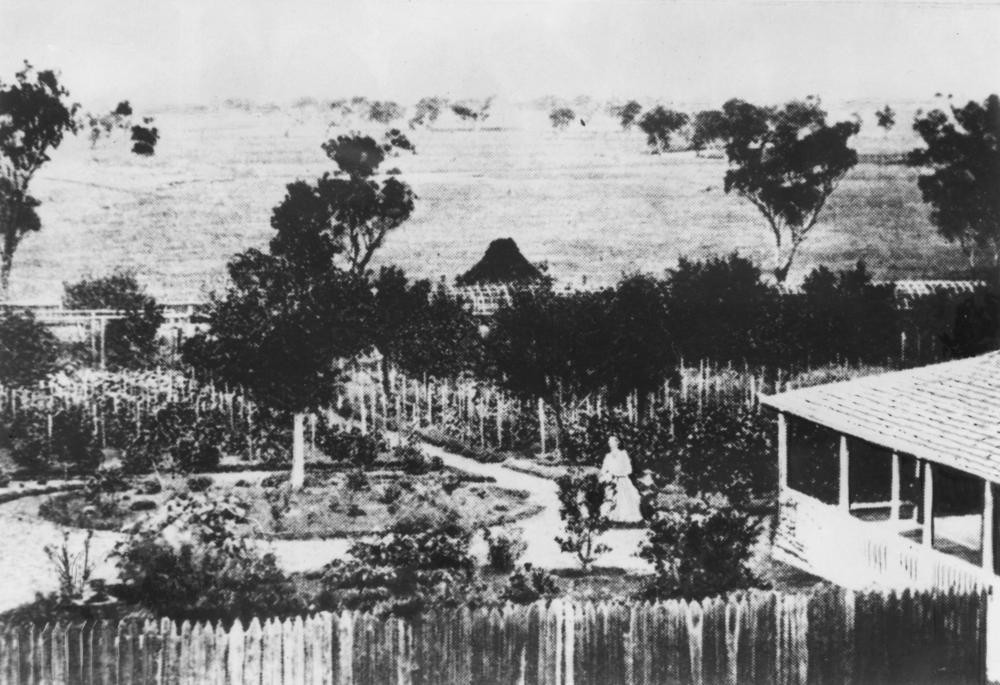
Jimbour Station's main bluestone house and gardens, ca. 1868, John Oxley Library, State Library of Queensland Neg: 7630
Thomas Bell died in 1874 and the property was inherited by Joshua Peter Bell. Joshua was three when he came to Queensland with his father and 47 when he inherited Jimbour. He served in the Queensland Parliament from 1863 representing West Moreton and Northern Downs until he was appointed to the Legislative Council, where he served as President. He held important ministries during this time being Treasurer several times and also Minister for Lands and Speaker. He was knighted in 1879.
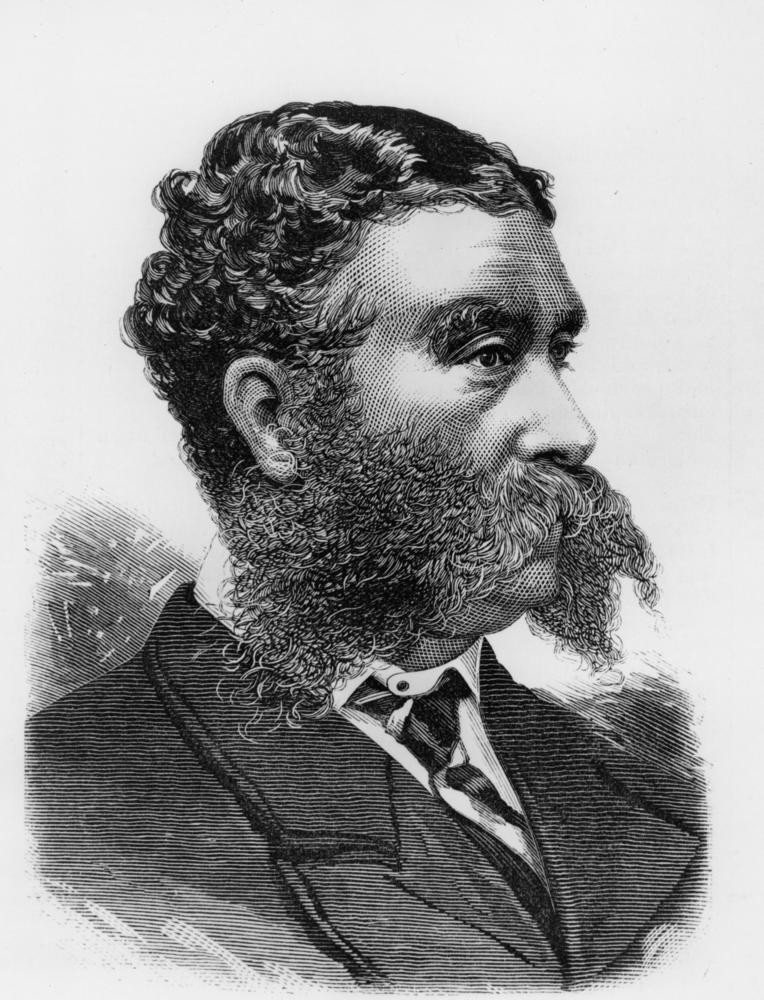
Sketch of Sir Joshua Peter Bell, John Oxley Library, State Library of Queensland Neg: 146243
Work on Jimbour House was started in 1874. According to Jimbour : its history and development 1840-1953 by Charles Russell, a later owner of Jimbour, the architect of the house was Joseph Warren, an associate of Colonial Architect F.D.G. Stanley, but the Queensland Heritage Register lists the architect as Richard Suter, of the firm of Suter and Voysey. Work on the house, described by Charles Russell as "a lofty and handsome sandstone mansion of two stories", was completed by early 1877. The Queensland Heritage Register claims the house "appears to have been the largest, grandest and most expensive private house constructed in Queensland in the 1870s."
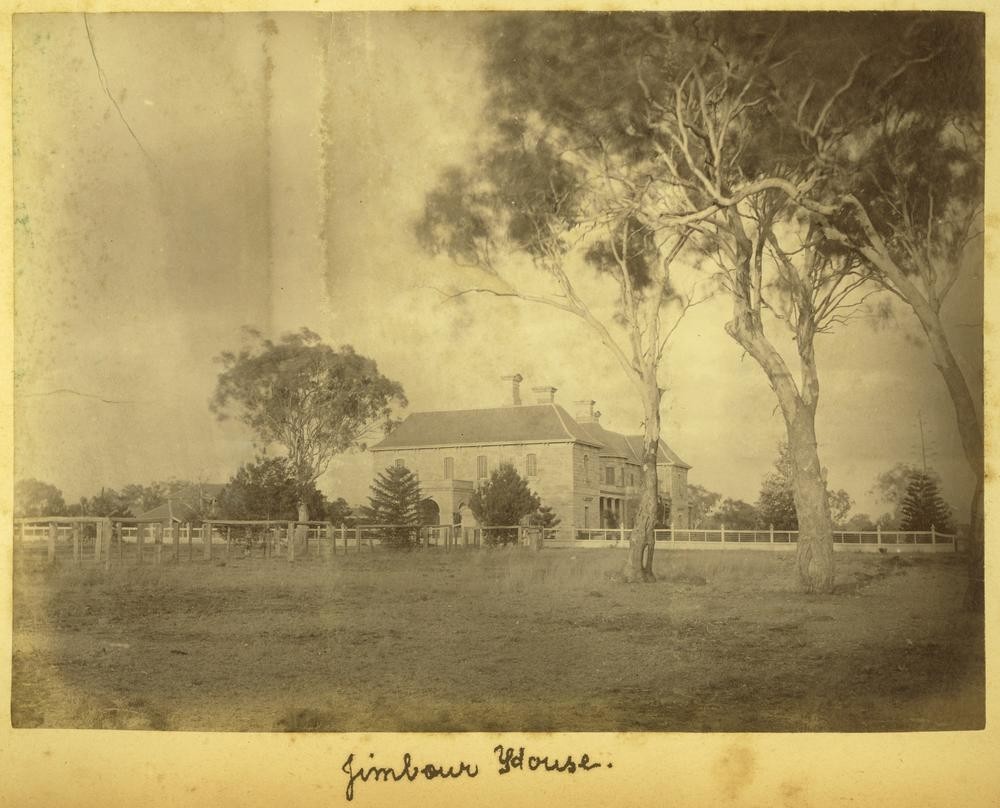
Jimbour House, ca. 1880, John Oxley Library, State Library of Queensland Image number: APO-026-0001-0017
Apart from the Welsh slate used on the roof, all of the materials for the house were sourced locally. Cedar was obtained from the Bunya Mountains and sawn and dressed at Cattle Creek. Other local timbers used included spotted gum, blue gum, ironbark, bunya, cypress, hoop-pine and satin wood. Sandstone was obtained from a quarry at Bunjinnie, some six miles from Jimbour House. Ten stonemasons, nine carpenters and a number of labourers were employed in the construction and the total workforce including quarrying, timber getting, carting and handling of materials was around 200. The cost of the building was some £30,000. As impressive as the house is, it is likely that further extensions were planned as the house lacks a permanent kitchen and staff quarters, which were located in the old bluestone house behind the main building.
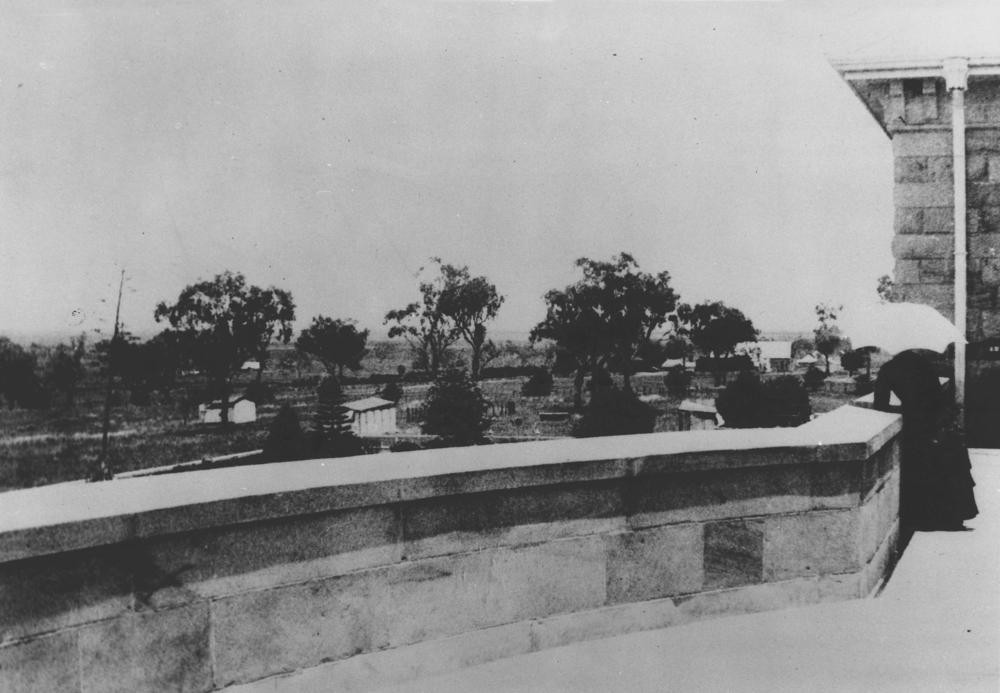
From the roof of the Jimbour House Darling Downs, 1888, John Oxley Library, State Library of Queensland Neg: 7631
The house is built on a lavish scale with spacious rooms and high ceilings. It was designed with the best modern conveniences of the time with gas and water on tap. The gas was produced from coal obtained from a mine on the property. The importance of the house in the district is described by Charles Russell.
Sir Joshua Peter Bell established early in our history the fact that a man could maintain a high standard of living in the country, and at the same time contribute in no small way to the cultural and administrative life of the community. Jimbour House at one time was described, with a fair degree of accuracy, as the Mecca of civilisation on the Darling Downs. Situated about seventeen miles from Dalby, it still stands as an historic landmark and a memorial to the Bell family.
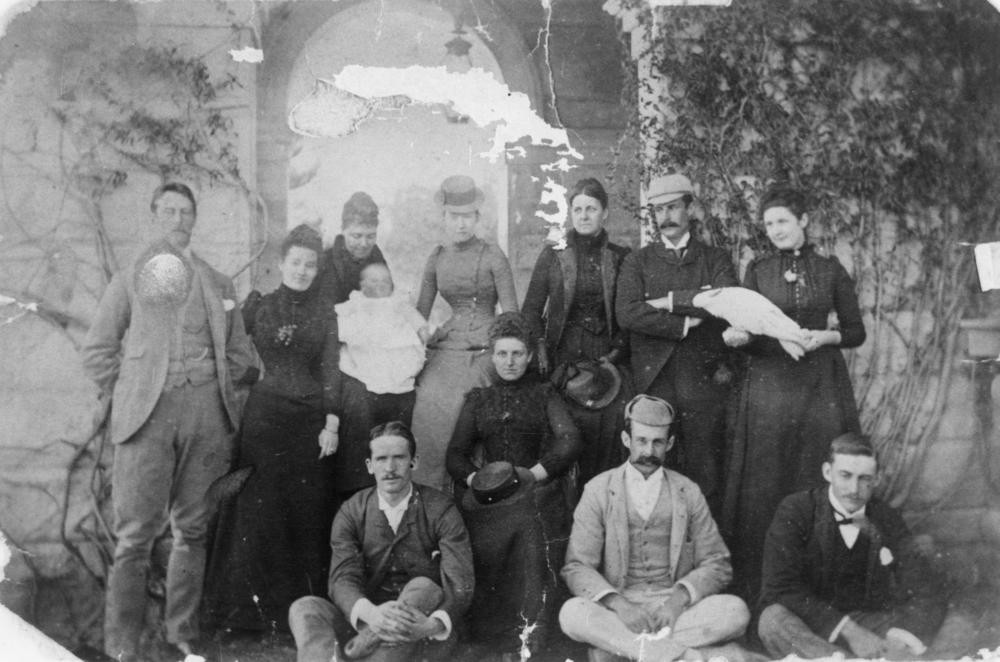
Family and friends at Jimbour House, parish of Jimbour, Darling Downs, ca. 1893, John Oxley Library, State Library of Queensland Neg: 74275
In 1881 Sir Joshua merged his pastoral holdings with those of Sir Thomas McIlwraith and J.C. Smyth to form the Western Queensland Pastoral Company. Later that year Sir Joshua died suddenly at the age of 54. Margaret, Lady Bell took her family to England where three of her sons attended Cambridge University while Jimbour was managed by the Company with Sir Arthur Palmer as General Manager. The family did not return until 1889 and the Western Queensland Pastoral Company had struggled financially with low prices, bad seasons and unwise investments leading to substantial debts built up at the Queensland National Bank of which Sir Joshua had been a founder and original shareholder. This led to the Bell family interests being signed over to the bank in 1892 with Lady Bell retaining use of Jimbour House and 100 acres. Most of the land was re-purchased by the Crown in 1908. In 1912 Lady Bell and her daughter moved to Brisbane and the House and contents were sold.
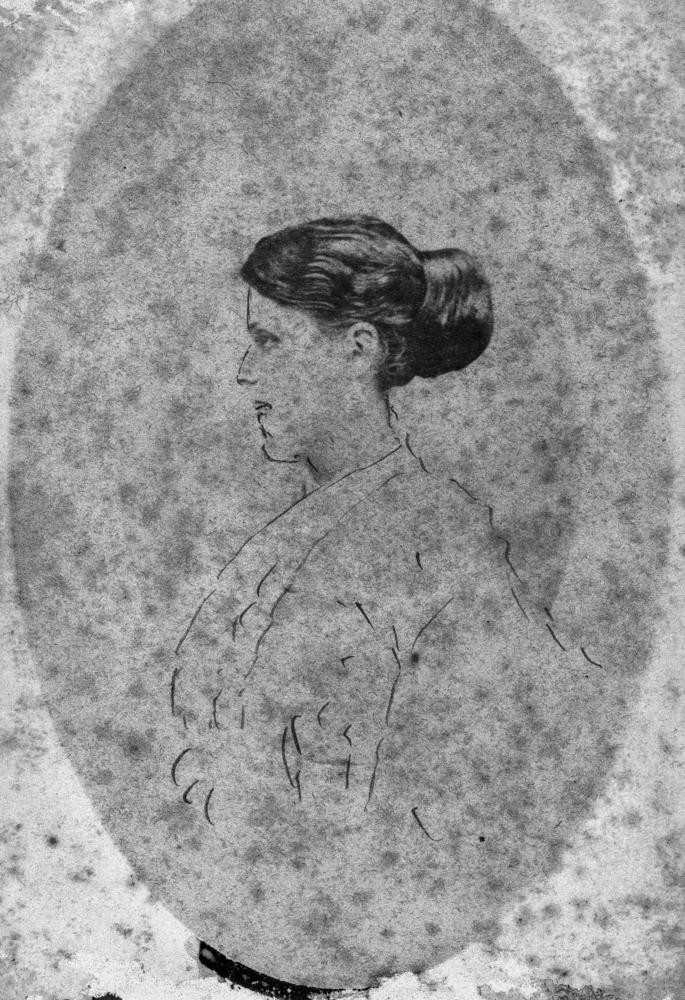
Margaret, Lady Bell, 1880, John Oxley Library, State Library of Queensland Neg: 194196
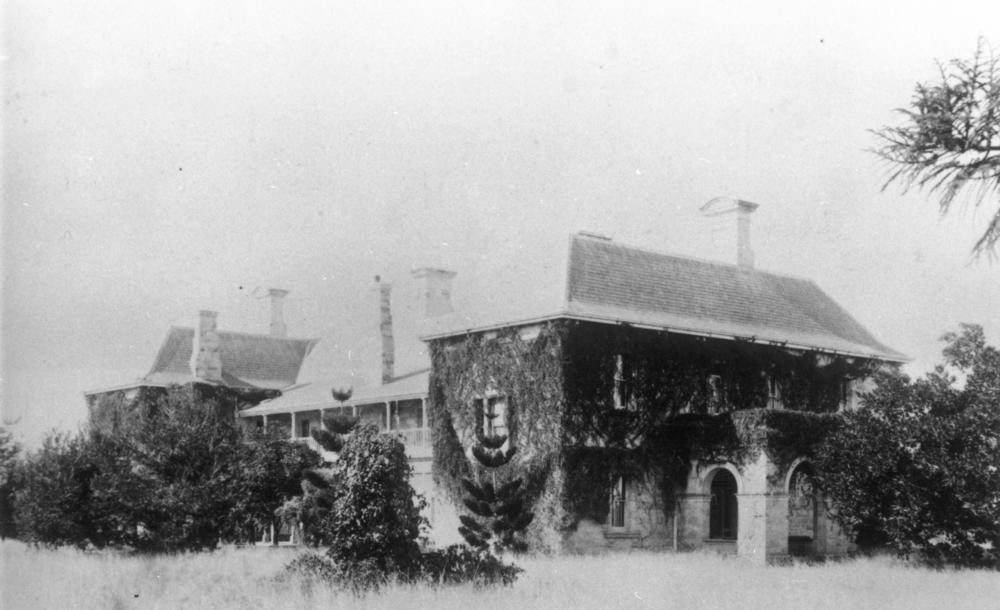
Jimbour House around 1894 after it had gone into receivership, John Oxley Library, State Library of Queensland Neg: 267
This began a period of neglect for the house and gardens until the property was purchased by Wilfred Adams Russell in 1923. Wilfred Russell began restoration work which has continued under the stewardship of three generations of the Russell family until the present day. Jimbour House was reopened in 1925 with the house made livable again although much restoration was still required and has continued. Many of the original pieces of furniture from the house which were sold in 1912 have been relocated and bought back by the Russell family.
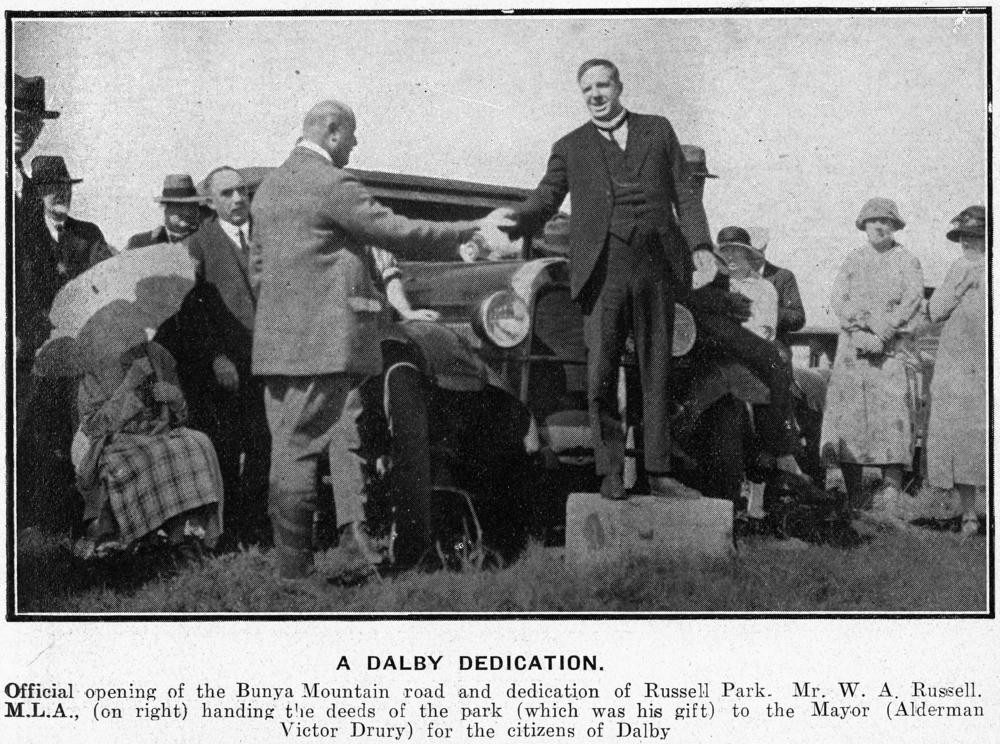
Wilfred Adams Russell at the offical opening of the Bunya Mountain road and dedication of Russell Park near Dalby, 1927, John Oxley Library, State Library of Queensland Neg: 197661
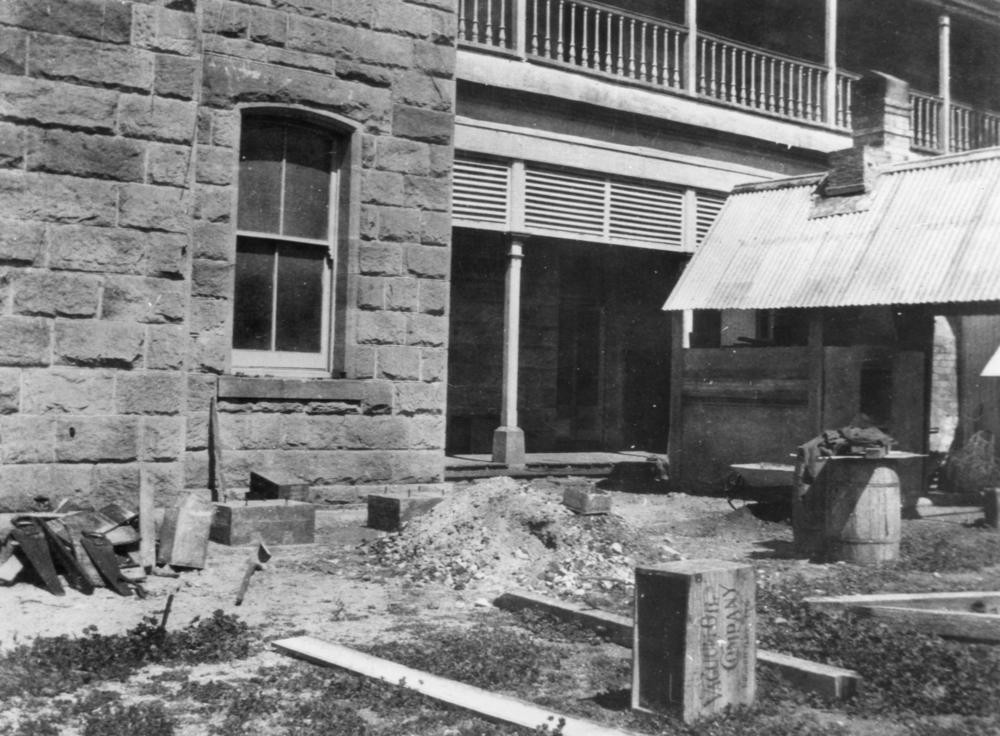
Back view of Jimbour House during renovations around 1925, John Oxley Library, State Library of Queensland Neg: 7662
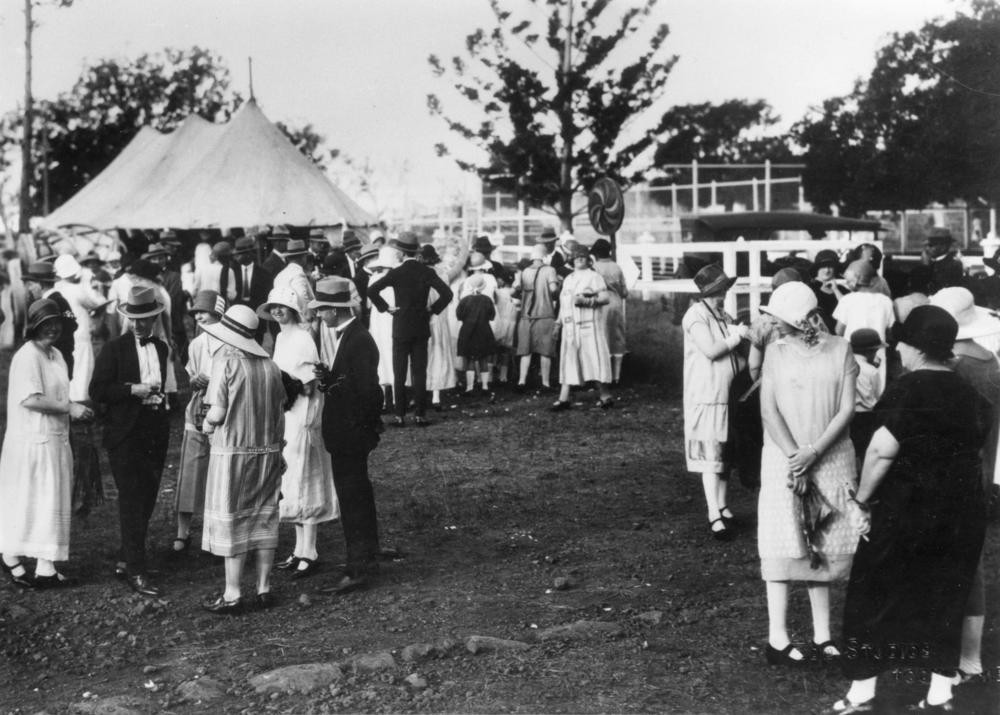
Fete held in the grounds of Jimbour House, Darling Downs, Queensland, 1925, John Oxley Library, State Library of Queensland Neg: 7650
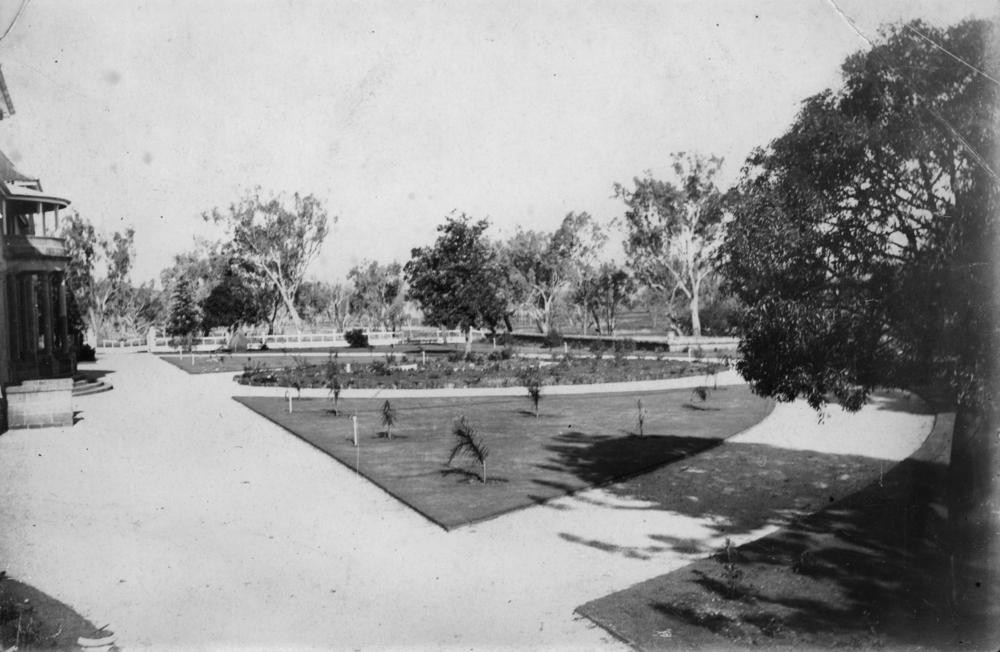
Driveway and garden paths of Jimbour Station, ca. 1926, John Oxley Library, State Library of Queensland Neg: 199263
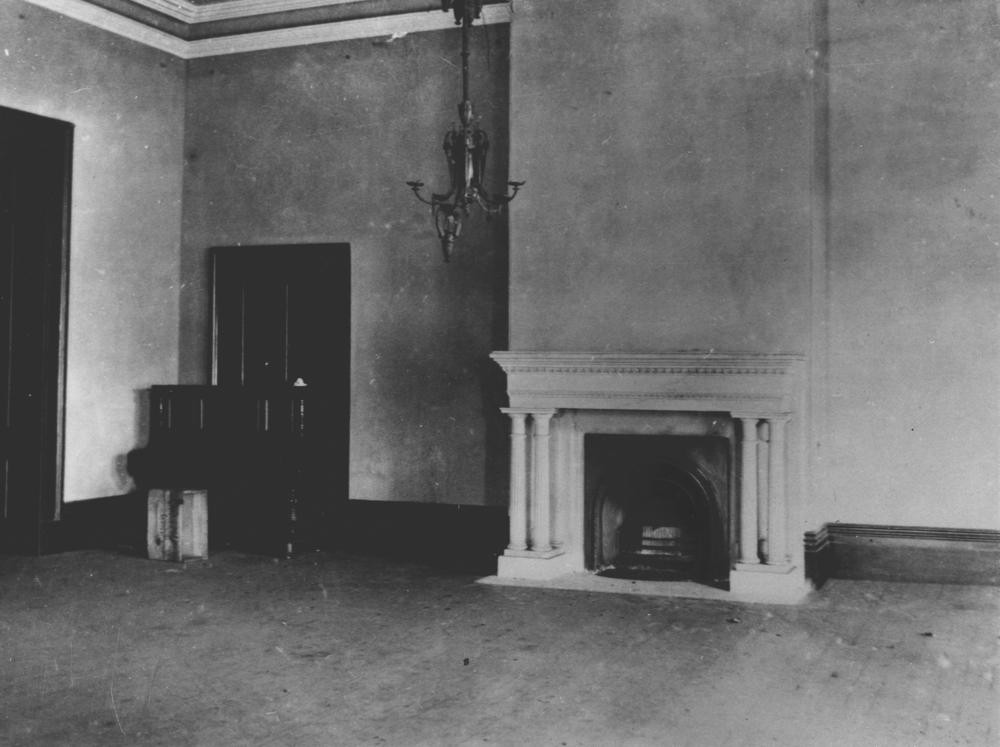
Interior of one of the main reception rooms at Jimbour House on the Darling Downs, Queensland, ca. 1924, John Oxley Library, State Library of Queensland Neg: 7661
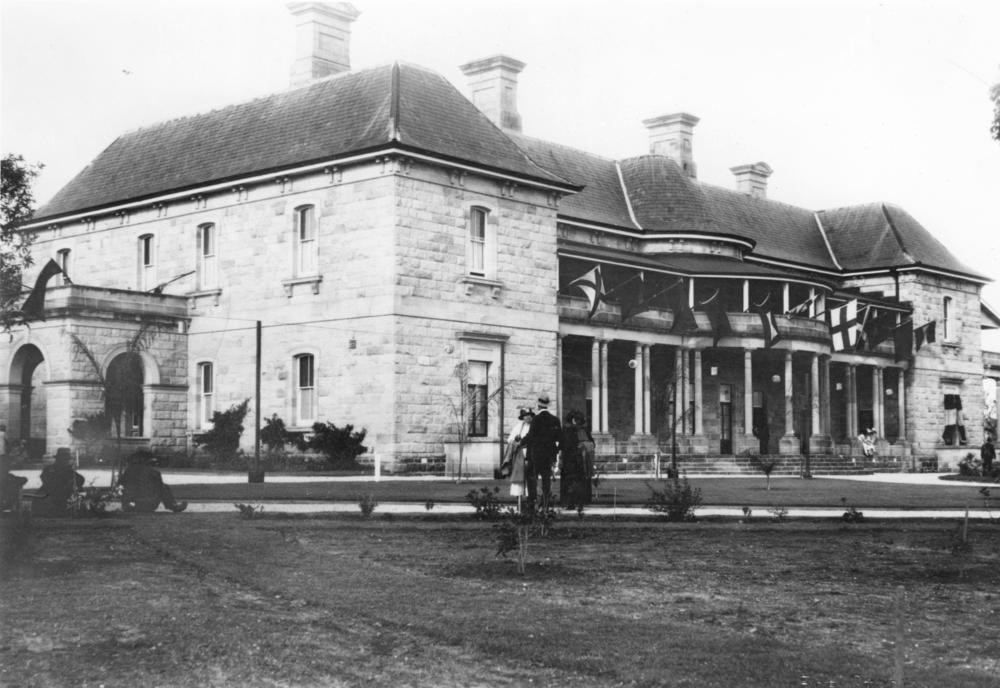
Jimbour House flying flags from the upper verandah, 21 November, 1925, John Oxley Library, State Library of Queensland Neg: 7655
Jimbour Station was mainly about sheep in the early days but under the stewardship of the Russell family the property has been used for growing crops, particularly wheat, and for breeding cattle. Many people have been employed on the property and there are a number of important buildings apart from the house which are still in use including a stone storehouse designed by Benjamin Backhouse, a chapel, a water tank, later converted into a dwelling, and the woolshed, situated some miles from the homestead. The woolshed was able to handle 250,000 sheep in a season.
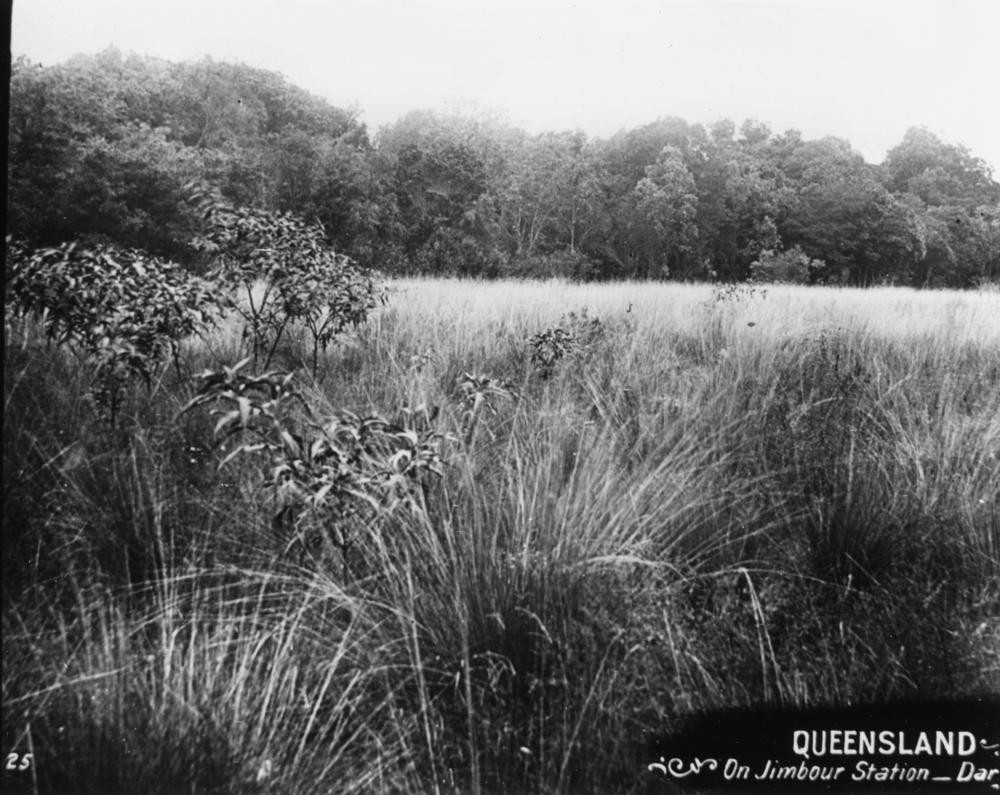
The rich grassland that attracted settlement at Jimbour, ca. 1895, John Oxley Library, State Library of Queensland Neg: 36895
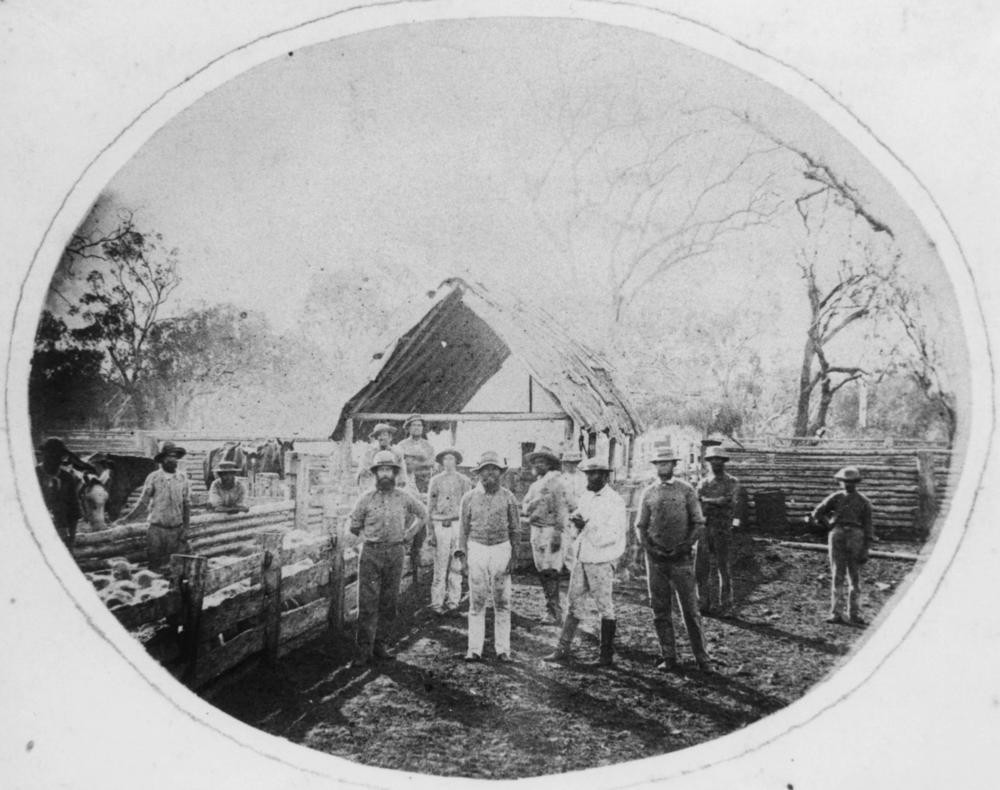
Drovers and farm hands in the Jimbour drafting yards, Jimbour Station, Queensland, 1869, John Oxley Library, State Library of Queensland Neg: 74272
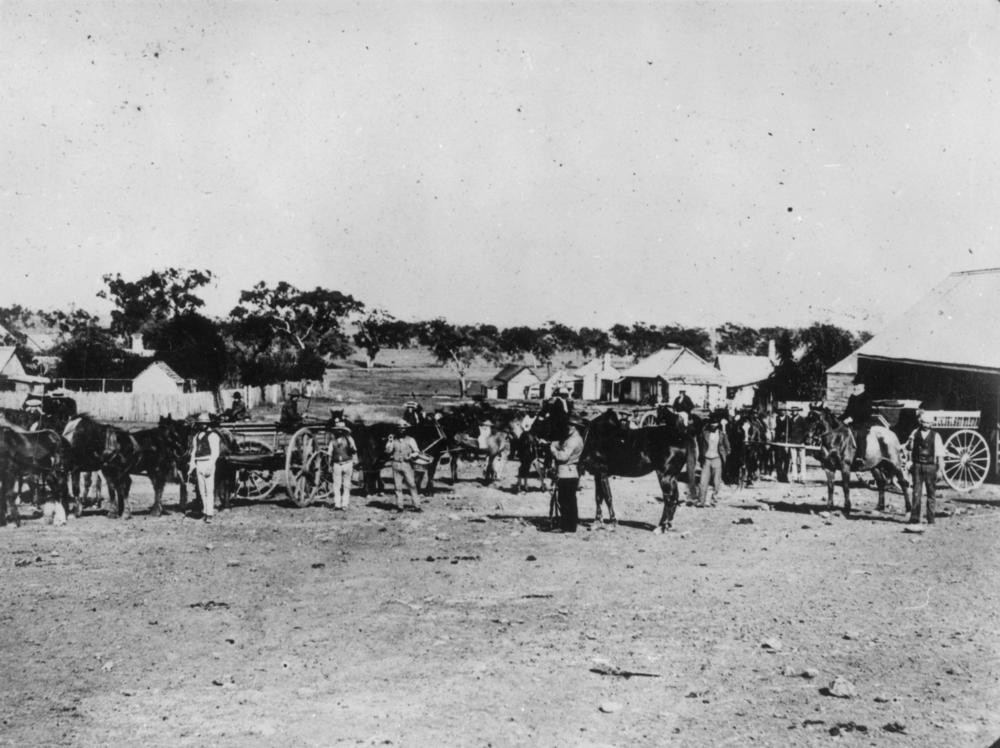
Activity at Jimbour Station, ca. 1884, John Oxley Library, State Library of Queensland Neg: 7537
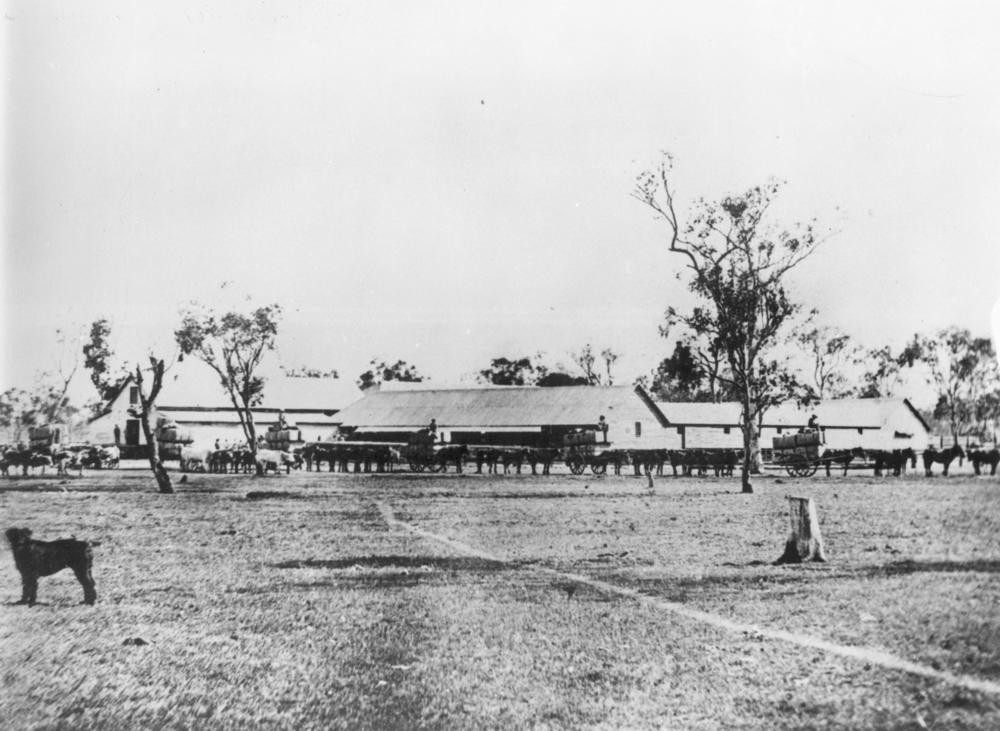
Bullock team outside the woolsheds at Jimbour Station, Queensland, ca. 1887, John Oxley Library, State Library of Queensland Neg: 7626
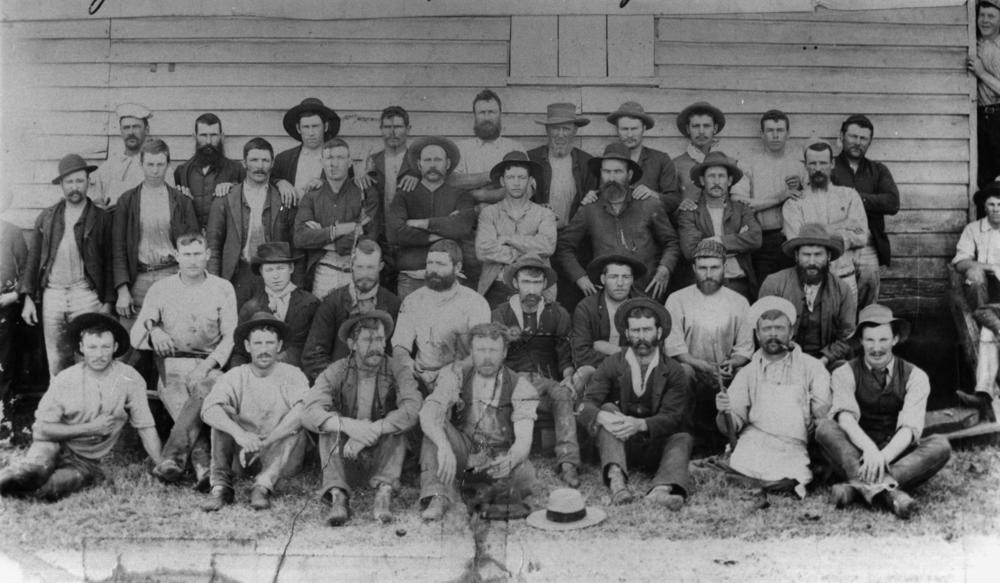
Employees at Jimbour Station, Queensland, ca. 1894, John Oxley Library, State Library of Queensland Neg: 12320
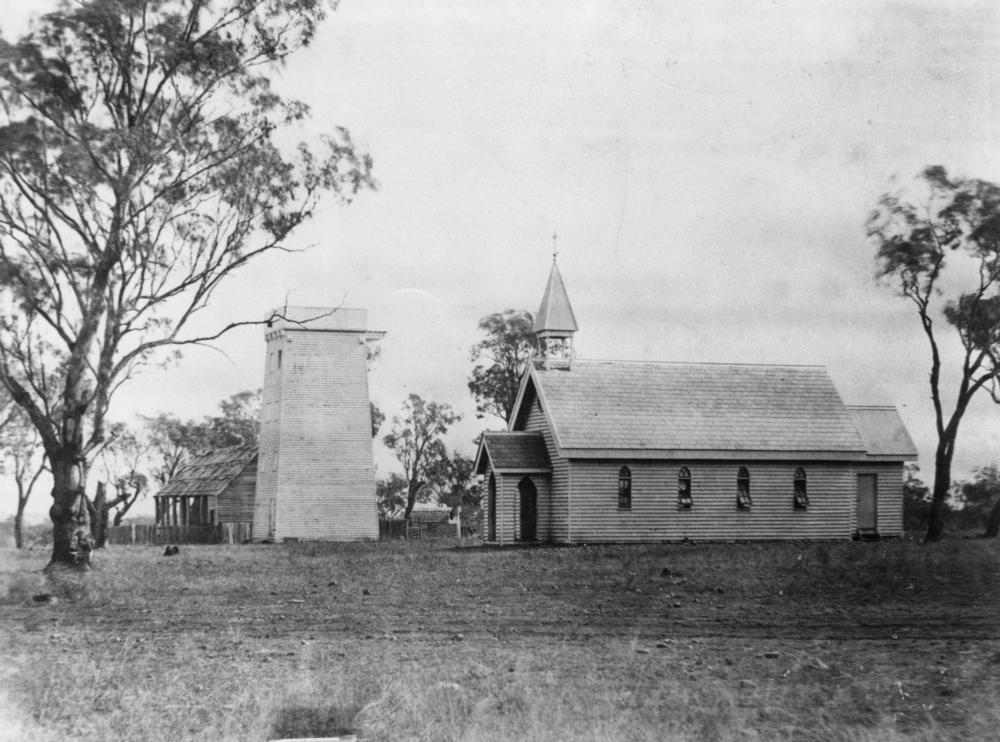
Church and water tower at Jimbour Station on the Darling Downs, Queensland, John Oxley Library, State Library of Queensland Neg: 18798
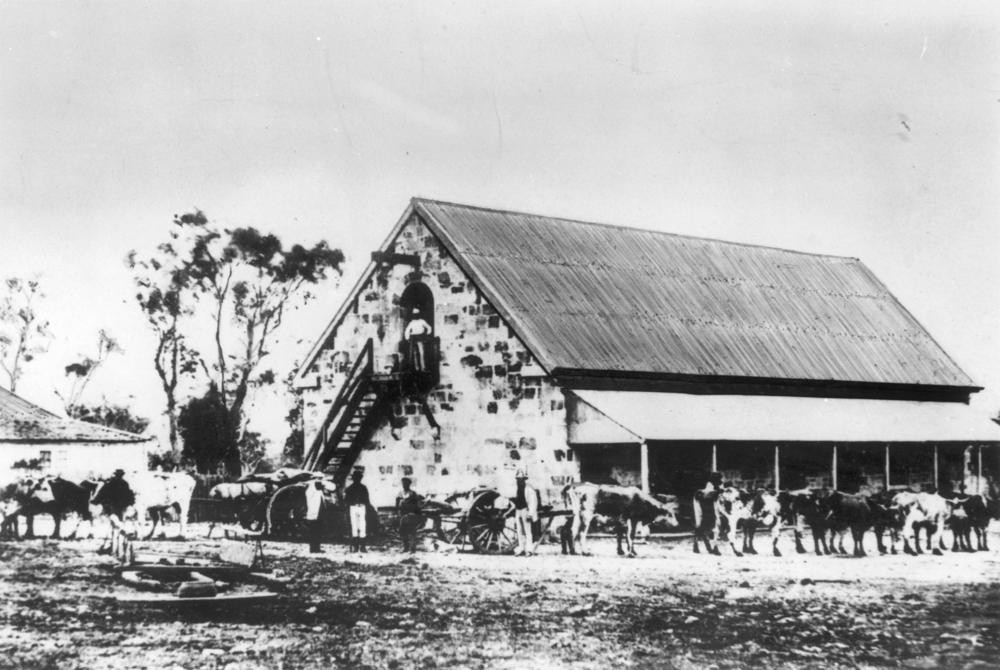
Loading produce on to waiting bullock carts at the Benjamin Backhouse designed store, Jimbour Station, ca. 1883, John Oxley Library, State Library of Queensland Neg: 7628
Jimbour briefly became a hub of scientific activity in 1882 when teams of astronomers converged to observe the transit of Venus. You can read that story here Transit of Venus 1882 and 2012
Jimbour House will come to the world stage again shortly as it forms the background for a new feature film The Second shot by Australian streaming service Stan which will open at the Gold Coast Film Festival tonight 17 April 2018.
Simon Miller - Library Technician, State Library of Queensland
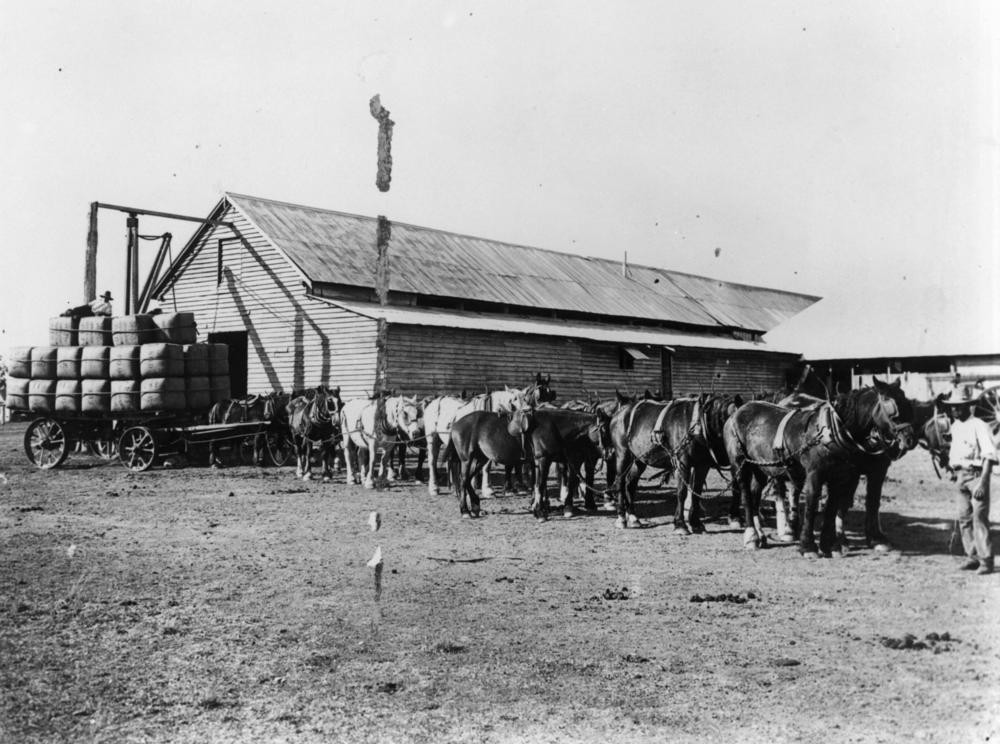
Loading wool bales at the Jimbour woolshed, Darling Downs, Queensland, ca. 1909, John Oxley Library, State Library of Queensland Neg: 46452
Comments
Your email address will not be published.
We welcome relevant, respectful comments.